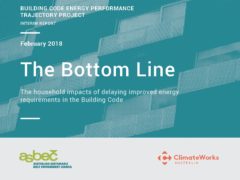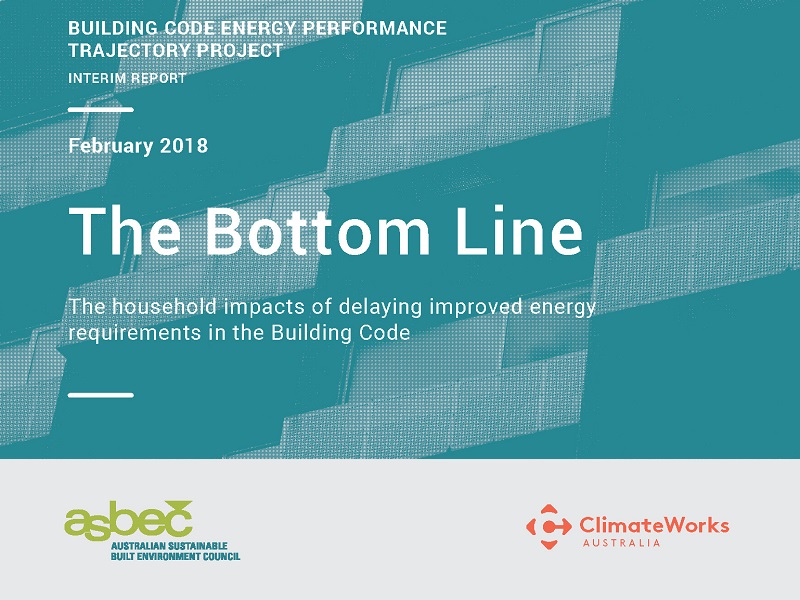 The Building Code Energy Performance Trajectory Project is an industry-led initiative seeking improvements to the energy requirements in the National Construction Code. This Interim Report – The Bottom Line – household impacts of delaying improved energy requirements in the Building Code – presents preliminary results, focusing on short-term improvements to residential requirements.
The Building Code Energy Performance Trajectory Project is an industry-led initiative seeking improvements to the energy requirements in the National Construction Code. This Interim Report – The Bottom Line – household impacts of delaying improved energy requirements in the Building Code – presents preliminary results, focusing on short-term improvements to residential requirements.
Improved building energy performance presents a win-win-win solution, reducing stress on the electricity network and support a least-cost pathway to decarbonisation while also deliver cost savings to households and businesses. Improvements to the Code can have a large impact because new construction adds up fast: More than half of the buildings expected to be standing in 2050 will be built after the next update of the Code in 2019.
The results of this report show:
- There are immediate and cost-effective opportunities to improve energy efficiency requirements in the Code. Reducing air leakage is a major opportunity for most building types assessed, along with ceiling fans and roof insulation in some cases. Across a range of climate zones and building types, these measures could individually deliver energy bill savings up to $150 per year.
- Combined, cost-effective measures could reduce energy consumption for heating and cooling by up to 51 per cent across a range of housing types and climates. This is equivalent to between 1 and 2.5 stars on the NatHERS scheme. In most jurisdictions, implementing these improvements would mean setting minimum requirements at the equivalent of 7 star NatHERS or higher.
- Implementing these opportunities across projected new buildings and renovations could deliver an estimated 10.8 million tonnes of cumulative emissions reductions to 2050, approximately equivalent to the annual emissions of the Loy Yang B coal power station and mine.
- Just three years delay could lock in an estimated $1.1 billion in wasted energy bills from these homes out to 2050, and 3 million tonnes of additional emissions.
- A high level assessment of rooftop solar PV indicates that it is now more financially attractive than most of the efficiency opportunities assessed, although it does not deliver a range of other benefits provided by energy efficiency.
A Final Report will be published in mid-2018 focused on the establishment of a long-term trajectory for Code energy requirements for both residential and non-residential buildings.
Read more: The Bottom Line – household impacts of delaying improved energy requirements in the Building Code | asbec
